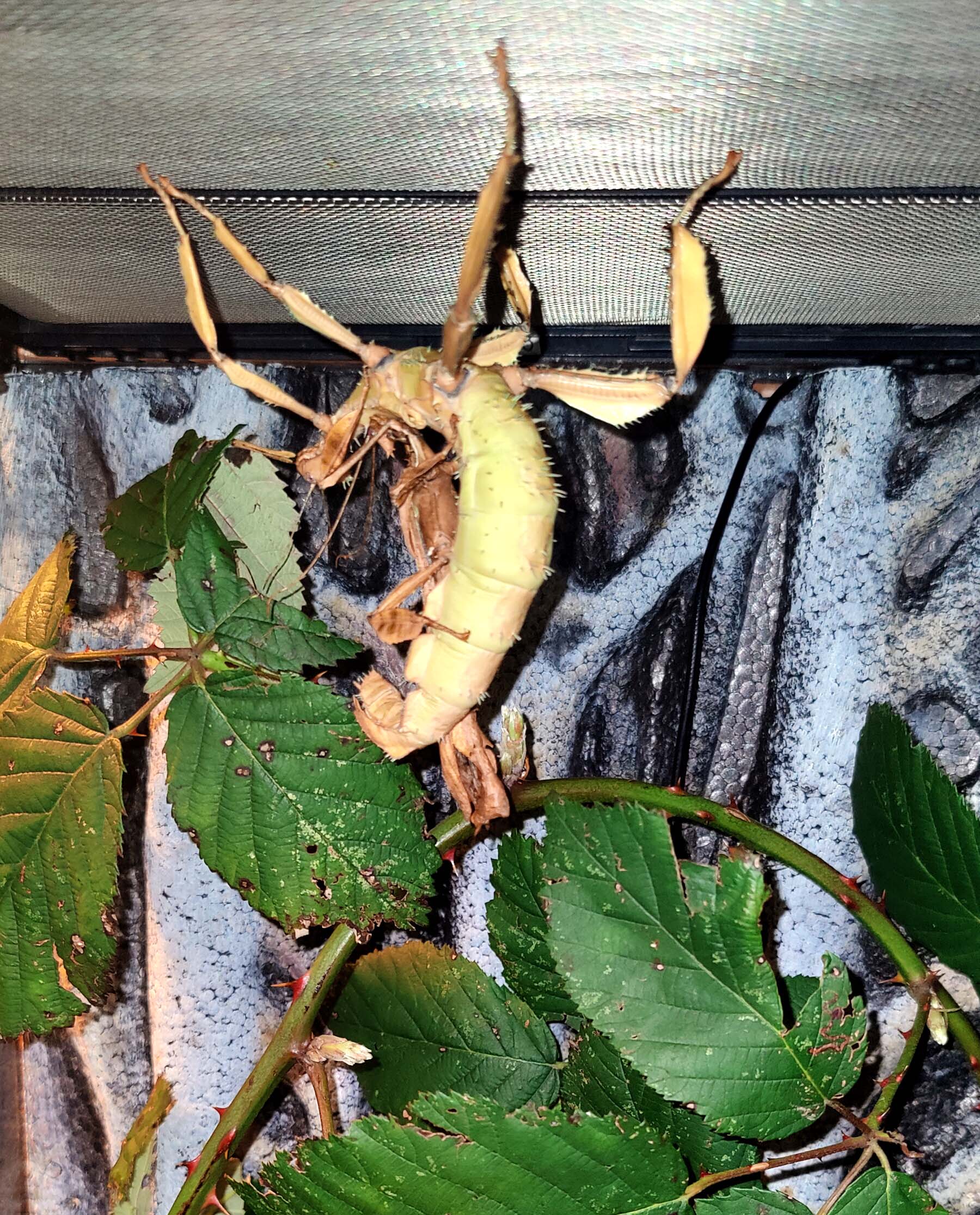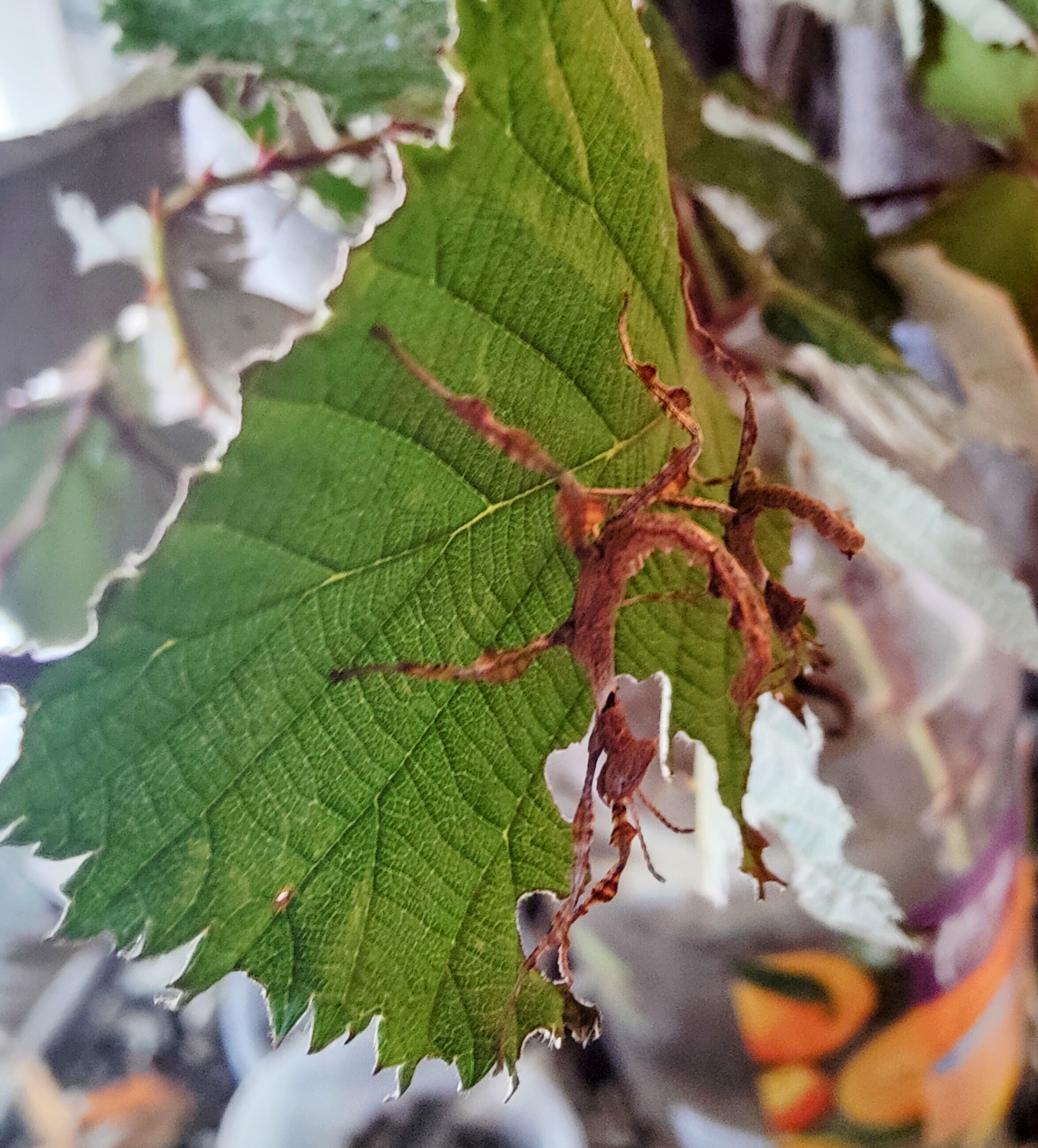
Sexed pair Extatosoma Tiaratum, giant prickly stick insect. Macleays
Reliable shipping
Flexible returns
Great pets for beginners or experienced keepers
Check the home page for postal day this week. Easy to keep, feed them bramble. Don't let them get too cold and they don't like it too humid. There are lots of care guides online.
Also known as giant prickly stick insects. They can't really hurt you although the adults can pinch a little bit. I kept these when I was a young child without any problems.
You will get a sexed pair of young ones but old enough for us to sex in the box. If you would like two free babies as well then add a message on checkout otherwise we will assume you just want the pair.
🪲 Appearance & Behaviour
Adult females are robust, reaching up to 18 cm in length, adorned with thorn-like spines and lobed limbs that enhance their leaf-like camouflage. Males are more slender, about 11–13 cm long, equipped with fully developed wings that enable flight. When threatened, both sexes exhibit a fascinating defence mechanism: curling their abdomen over their back to mimic a scorpion, deterring potential predators.
🌿 Diet & Feeding
These herbivorous insects thrive on a diet of fresh foliage. In captivity, they readily consume leaves from bramble, eucalyptus, and oak. Ensuring a constant supply of fresh, pesticide-free leaves is crucial for their health
🏡 Housing & Care
The recommended cage dimensions are at least three times the insect's length in height and twice in width and depth, providing enough space for moulting and movement. Maintain temperatures between 21–27°C (70–80°F) and humidity levels around 60–70%. We don't mist them and it is reported doing so kills them.
So in summary: feed bramble, warm room temperature, do not spray/mist them, not too humid but not very low humidity either (use a cheap temperature/humidity meter to check regularly)
🐣 Breeding & Lifecycle
Females can reproduce both sexually and through parthenogenesis, laying eggs that resemble plant seeds. In the wild, these eggs are often collected by ants and stored underground, providing protection until hatching. The nymphs, mimicking ants in appearance, emerge and climb vegetation to continue their development.


